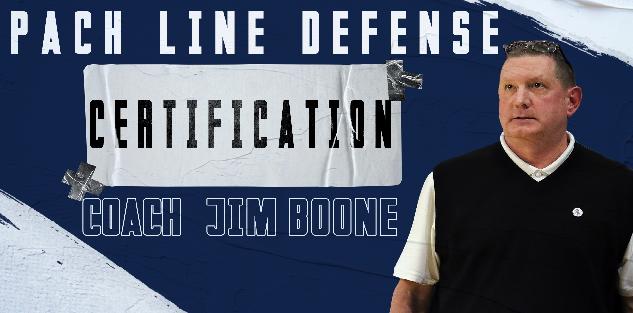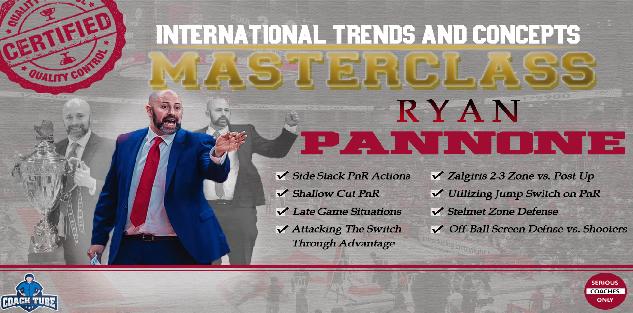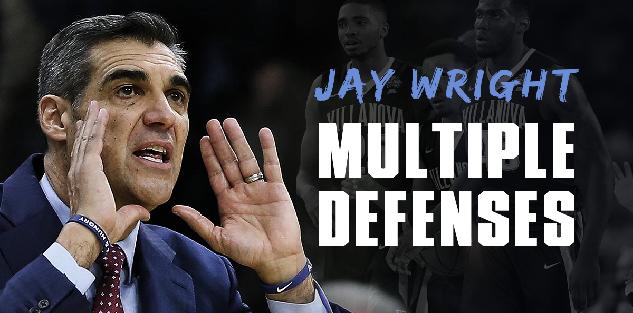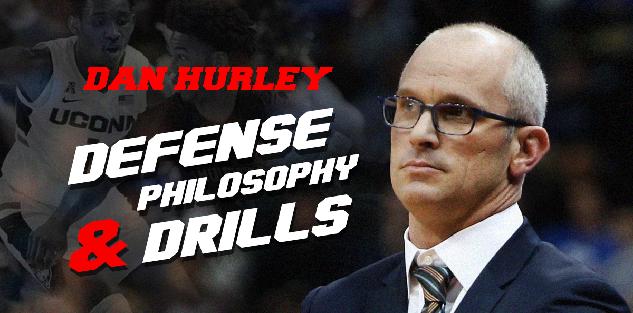Featured courses
- Two Great Game Situational Workouts For the Basketball Offseason by Grant Young
- Two Reads Basketball Players Must Understand Before Executing the Ball-Screen by Grant Young
- Two of LSU Coach Kim Mulkey’s Game-Winning Inbounds Plays by Grant Young
- Three Effective Early-Season Defensive Basketball Drills by Grant Young
- Four Essential Tips For Basketball’s 1-3-1 Zone Defense by Grant Young
- Four Zone Defense Drills to Strengthen Your Team by Grant Young
- How to Beat the Three Most Common Pick and Roll Coverages by Grant Young
- Two Drills to Improve Shooting at the Start of the Basketball Season by Grant Young
- Core Basketball Principles That Dallas Mavericks Coach Sean Sweeney Teaches by Grant Young
- Three Competitive Shooting Drills For Your Basketball Team by Grant Young
- How To Teach The ‘I’ Generation of Basketball Players by Grant Young
- Three Elite Drills to Begin a Basketball Practice With by Grant Young
- How to Build a Championship-Winning Basketball Team Culture by Grant Young
- Two of Texas Women’s Basketball Coach Vic Schaefer’s Tips For Team Culture by Grant Young
- Atlanta Dream WNBA Coach Brandi Poole’s Four Sets for Secondary Offense by Grant Young
- NC State Basketball Coach Brett Nelson’s 4 Crucial Point Guard Qualities by Grant Young
- Kentucky Coach Mark Pope’s Five Guard Rules For Offense by Grant Young
- McNeese State Basketball Coach Will Wade’s 4 Core Pillars by Grant Young
- 4 Tips To Instantly Improve Your Free Throw Shooting by Tyler Linderman
- Assemble a Championship-Caliber Basketball Rotation by Brandon Ogle
- Two of UConn Coach Dan Hurley’s Key Defensive Drills by Grant Young
- Four Post Moves All Basketball Forwards Should Have In Their Bag by Grant Young
- Four of Baylor Coach Nicki Collen’s Midseason Pick and Roll Adjustments by Grant Young
- WNBA Legend Sue Bird’s Two Tips For Attacking on Offense by Grant Young
- Houston Coach Kelvin Sampson’s Three Keys for Building a Basketball Program by Grant Young
- Two of Tom Izzo’s Top Michigan State Defensive Drills by Grant Young
- Four of Olympic Gold Medalist Coach Mechelle Freeman’s Relay Race Strategies by Grant Young
- Three Key Strategies Will Wade Uses to Build a Dominant Team by William Markey
- Five UConn Huskies Men’s Basketball Plays That You Can Use by Grant Young
- Three Tips for Maintaining Team Culture at the End of a Basketball Season by Grant Young
- Three Dribble Drive Motion Drills to Teach Your Basketball Team by Grant Young
- Three Dribbling Drills For Non-Primary Ball Handlers by Grant Young
- Four Advanced Ball Handling Drills For Basketball Guards by Grant Young
- Three Tips to Sharpen Your Post Player’s Footwork in Basketball by Grant Young
- These Three Pick and Roll Drills Are Crucial For Any Ball Screen Offense by Grant Young
- Three Closeout Drills to Improve Basketball Shooting Defense by Grant Young
- Three Tips to Perfect the Packline Defense in Basketball by Grant Young
- Four Keys to Executing the Read and React Offense in Basketball by Grant Young
- Three Tips to Develop Elite Basketball Shooters by Grant Young
- Three Crucial Keys to Executing the 5 Out Offense in Basketball by Grant Young
- These Three Offensive Sets Will Help You Beat Any Zone Defense by Grant Young
- Three Transition Basketball Drills To Play With More Pace by Grant Young
- Three 5 Out Offense Drills Any Basketball Coach Can Use by Grant Young
- Four Vital Techniques for a Motion Offense in Basketball by Grant Young
- Three Baseline Inbounds Plays To Win Your Basketball Team Games by Grant Young
- Four Drills For Sharpening the European Ball Screen Offense by Grant Young
- Three Positioning Tricks For a Basketball Zone Offense by Grant Young
- Three Rules to Perfecting Basketball's Lock Left Defensive System by Grant Young
- UCLA WBB Coach Cori Close’s Two Keys to Winning the Mental Game by Grant Young
- Four of Alabama Coach Nate Oats’ Favorite Basketball Drills by Grant Young
- Three Ways To Turn Transition Offense in Basketball Into Points by Grant Young
- Three Drills to Master Basketball's Pack Line Defense by Grant Young
- Three Transition Defense Drills to Halt Fast Breaks by Grant Young
- Four Offensive Rebounding Drills to Win Second Possessions by Grant Young
- 4 Defensive Technique Drills from Boston Celtics Assistant Coach Brandon Bailey by Marek Hulva
- 5 Drills to Improve Ball Handling by Tyler Linderman
- 13 FUNNY BASKETBALL GIFS by Alex
- BASKETBALL SPEED AND AGILITY: 8 QUESTIONS FOR COACHTUBE EXPERT RICH STONER by Jaycob Ammerman
- Defensive Strategies for Basketball by Ryan Brennan
- 4 Keys To Turning Your Program Into Championship Contender By Dallas Mavericks Coach Sean Sweeney by Marek Hulva
- 5 Components to Creating a Winning Basketball Program by Justin Tran
- Guide to Becoming a Lethal Scorer in Basketball by Justin Tran
- Zone Defense In the NBA Eastern Conference Finals by James Locke
- Mastering Court Mobility: Tips for Effective Movement in Basketball by Justin Tran
- 5 Basketball Shooting Drills: How to Develop a Sharpshooter by James Locke
- 6 Points of Emphasis for a Successful 5 Out Offense by Jaycob Ammerman
- Effective and Efficient Methods to Practice During the Basketball Season by Justin Tran
- Three Great Passing Drills From a Basketball Coaching Legend by Grant Young
- 7 Principles For Perfecting the Princeton Offense in Basketball by Grant Young
- How to Replicate A Modern NBA Offense by Grant Young
- Three Great Two-Ball Dribbling Drills For Basketball Development by Grant Young
- Two Rebounding Drills to Win Your Basketball Team Championships by Grant Young
- How to Improve Your Basketball Team’s Defense With the Shell Drill by Grant Young
- How Baylor Basketball’s Scott Drew Develops Elite Guard Play by Grant Young
- Off-Ball Movement Tips and Strategies: Lessons From the NBA Finals by James Locke
- Player Development: Scott Drew’s Tips for Producing NBA Guards by James Locke
- How to Execute a Spread Offense in Basketball by Grant Young
- Four Quality Quotes From Four Final Four Coaches by Grant Young
- A Guide to the Pack Line Defense by Alex Martinez
- 3 Defensive Build Up Drills to Improve Team Basketball Defense by Grant Young
- Battle of Two Great Coaches: Best Plays from the NBA Finals Contenders by Justin Tran
- 10 Creative Ways Athletic Programs Can Use a Video Board to Raise Money by Coach Williams
- How to Use 3 on 3 to Improve Your Basketball Team by Grant Young
- How to Defend the Pick and Roll by Grant Young
- Mastering Basketball Defense: Techniques, Drills, and Strategies for Success by Justin Tran
- Three Tips From The Coach Who Developed Giannis Antetokoumnpo by Grant Young
- 2023 NBA Draft: Skills and Technique from Top Prospects by Justin Tran
- From College to the Pros: Transitioning the Dribble Drive Offense by Justin Tran
- Positionless Basketball: Redefining Roles on the Court by Justin Tran
- Revolutionize Your Offense: Proven Concepts to Elevate Your Basketball Game by Justin Tran
- 5 Essential Fastbreak Drills Every Basketball Coach Should Know by James Locke
- How to Run a Circle Offense in Basketball by Grant Young
- Game-Changing Strategies: ATO Plays in the EuroLeague and Olympics by Justin Tran
- How to Stand Out at Basketball Tryouts by Grant Young
- How to Improve Your Basketball Team’s Transition Defense by Grant Young
- Indiana Fever GM Lin Dunn’s Two Keys For Women’s Basketball Coaches by Grant Young
- Strength Training Strategies Every Basketball Player Should Have by Grant Young
- A WNBA Basketball Coach’s Four Priorities In Transition Defense by Grant Young
- Three Adjustments to Make When Your Basketball Offense Isn’t Working by Grant Young
- Three Pillars to Applying Defensive Pressure on the Basketball Court by Grant Young
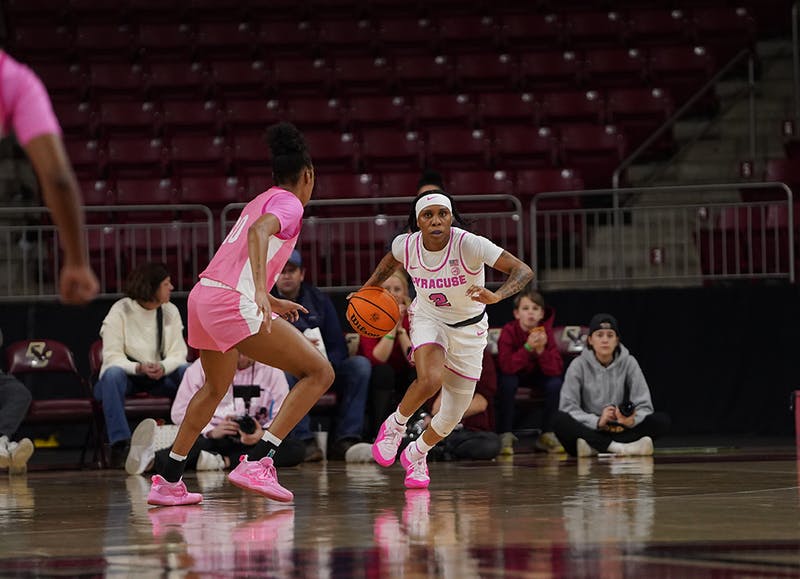
A WNBA Basketball Coach’s Four Priorities In Transition Defense
- By Grant Young
Having solid transition defense in basketball is absolutely crucial. Picture this: when a team fails to hustle back and set up its defense promptly after a turnover or a missed shot, it's practically serving up easy scoring opportunities to the other team on a silver platter.
Good transition defense is like a safety net in the way it prevents the opposing team from capitalizing on fast breaks and scoring those effortless baskets. Not only does strong transition defense thwart the opposing team's offense, but it also sends a powerful message about a team’s toughness and grit. By consistently regrouping on defense and shutting down easy scoring chances, a team can frustrate their opponents while also boosting their confidence and control over the game.
Not to mention that effective transition defense can also open up doors for the defending team. By forcing the opposing team to play a half-court offense, it increases the odds of getting a stop and securing a defensive rebound, ultimately creating more offensive possessions and scoring opportunities.
All of this is to say that impeccable transition defense is a game-changer in basketball. It's a cornerstone of successful team defense and can truly tip the scales in favor of a victorious outcome.
But if coaching transition defense was easy, every basketball team in the world would be elite at it. The reality is that coaching transition defense in basketball is challenging due to the need for quick player coordination, individualized teaching, and instilling a strong defensive mindset.
However, coaching transition defense can be made a whole lot easier with tips from a legend like Dan Hughes.
Coach Hughes most recently served currently as the head coach of the WNBA’s Seattle Storm, a role he held from 2018-2021. In 2018 he led his team to the finals and won a WNBA championship with the Seattle Storm. Coach Hughes is the WNBA’s all-time leader in games he has coached (588) and is ranked third all-time in career wins (263).
His 'Culture and Transition Defense’ course conveys vital tips for making transition defense one of your basketball team’s biggest strengths.
Q&A Assigning Crashes
“If you don’t play transition defense, you’re never going to be defensively what you need to be. Because you always going to be acted upon as opposed to acting on,” Coach Hughes says.
He then goes on to discuss how he had been priority-based when it comes to deciding which players have to focus on getting back in transition. The priority is based on one statement: You have the defend the most dangerous threat to score.
From there, he goes on to discuss how he employs what’s called a “drop two” placement on transition defense. This means that out of either the point guard, the shooting guard, or the small forward, two of those three players are always going to prioritize getting back on defense when a shot goes up. Deciding which two of these three players it is will depend on their positioning when the shot goes up. For example, while ideally, the point guard is always getting back, if they’re along the baseline or driving into the paint then it becomes the duty of the other players.
Once those two players begin getting back, Coach Hughes has them employ what’s either called a half-check or a full-check. A half-check is when the transition defenders pick up the offensive transition player at or before the half-court line, whereas the full-check is all the way back to the basket.
Coach Hughes explains that he prioritizes four things in transition defense:
1. Protect the basket area
In any situation, out-numbered or not, a team should never let their opponent lay the ball up to an open basket.
2. Contain the basketball
Coach Hughes explains that a transition defense should always want to ball put on either side of the court. A guard dribbling down the middle of the court is never good news.
3. Throw away who you’re guarding
When a player goes on transition defense, they must analyze what’s happening to their team and always defend the most dangerous threat, regardless if it’s their man or not.
4. The weak-side three-point shooter
One of the trailers or wing players in transition offense is almost always running to the weak side corner to spot up for a three, in case the initial dribble drive attempt doesn’t work. Defensive players should always be aware of this shooter and close out on them as soon as the drive is accounted for.
Coach Hughes explains that, as these four pillars are prioritized and executed every time on transition defense, your team will become an elite team in that regard.
Double Drags
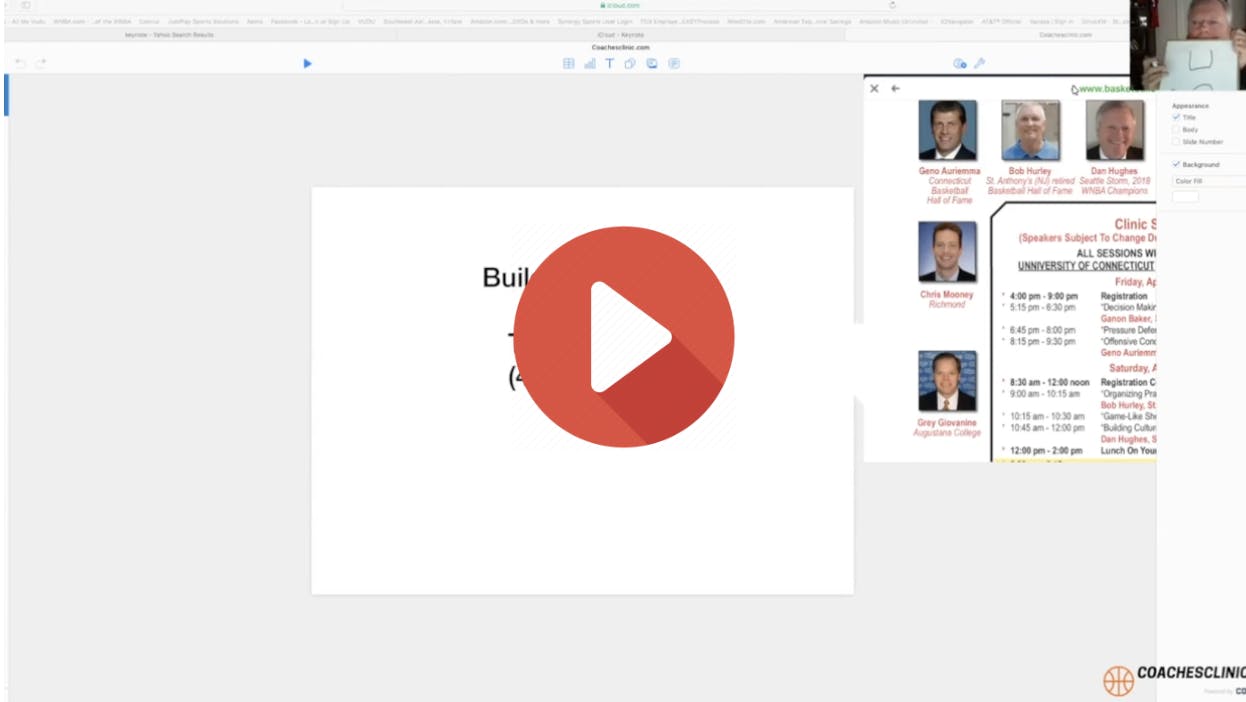
While your team’s ability to execute transition defense is ultimately going to rely on the players, coaches should not only be responsible for instilling the aforementioned priorities within their team, but they should always be aware of the opposing players that are on the court.
If a coach has watched enough film on an opponent, they should have a good enough idea of which players are threats to shoot three-pointers, especially those who like to run to the corner and set up for that shot in case the drive doesn’t work.
A good coach will be aware of when these players are on the court and call them out to their transition defenders when the offense is on the attack.

